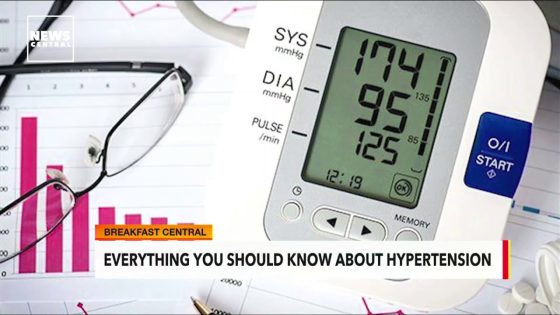In this video Dr O’Donovan explains what carpal tunnel syndrome is, how to treat it at home (including 3 exercises to do at home for carpal tunnel syndrome) and when you should seek medical advice.
What is it?
Carpal tunnel syndrome (CTS) is a condition where the median nerve is compressed where it passes through a short tunnel at the wrist.
What are the symptoms?
The main symptom is altered feeling in the hand, affecting the thumb index, middle and ring fingers; it is unusual for the little finger to be involved. Many people describe the altered feeling as tingling. Tingling is often worse at night or first thing in the morning. It may be provoked by activities that involve gripping an object, for example a mobile telephone or newspaper, especially if the hand is elevated. In the early stages the symptoms of tingling intermittent and sensation will return to normal. If the condition worsens, the altered feeling may become continuous, with numbness in the fingers and thumb together with weakness and wasting of the muscles at the base of the thumb. Sufferers often described a feeling of clumsiness and drop objects easily. CTS may be associated with pain in the wrist and forearm.
What is the treatment?
Non-surgical treatments include the use of splints, especially at night, and steroid injection into the carpal tunnel. CTS occurring in pregnancy often resolves after the baby is born.
Surgery is frequently required. The operation involves opening the roof of the tunnel to reduce the pressure on the nerve (see diagram: the roof of the carpal tunnel is called the flexor retinaculum). The most common method involves an incision over the tunnel at the wrist, opening the roof under direct vision. In an alternative keyhole method (endoscopic release) the roof is opened with instruments inserted through one or two small incisions. The outcomes of the two techniques are similar and your surgeon can discuss the most appropriate method. The surgery may be performed under local anaesthesia, regional anaesthesia (injected at the shoulder to numb the entire arm) or general anaesthesia.
The outcome is usually a satisfactory resolution of the symptoms. Night pain and tingling usually disappear within a few days. In severe cases, improvement of constant numbness and muscle weakness may be slow or incomplete. It generally takes about three months to regain full strength and a fully comfortable scar.
TIMELINE:
00:00 – Introduction
00:33 – Things to do at home
01:44 – Three hand exercises to do at home
03:10 – When to seek medical input
FURTHER RESOURCES:
Further information via NHS website about carpal tunnel (UK):
https://www.nhs.uk/conditions/carpal-tunnel-syndrome/
Mayo Clinic information on carpal tunnel syndrome (USA):
https://www.mayoclinic.org/diseases-conditions/carpal-tunnel-syndrome/symptoms-causes/syc-20355603
British Society for Surgery of the Hand (UK):
https://www.bssh.ac.uk/patients/conditions/21/carpal_tunnel_syndrome
Royal College of Surgeons of England – information on carpal tunnel surgery (UK):
https://www.rcseng.ac.uk/patient-care/recovering-from-surgery/carpal-tunnel-release/
************************************************************************
Connect through:
YouTube: www.youtube.com/doctorodonovan
TikTok: @doctorodonovan
**************************************************************************
Disclaimer:
The video is intended as an educational resource only. The information within this video or on this channel isn’t designed to replace professional input, so if you have any medical issues please consult a medical provider. No professional relationship is being created by watching this video. Dr. O’Donovan cannot give any individual medical advice. All information should be verified for accuracy by the individual user. Dr O’Donovan accepts no responsibility for individual interpretation of data, although it is always accurate to the best of his knowledge at the time of the video being published. This is an EDUCATIONAL video. Images are used in accordance with fair use guidelines.
Legal information:
Content provided via YouTube is for general information purposes ONLY. Information videos are not produced to provide individualised medical advice. Medical education videos on Doctor O’Donovan are not a substitute for professional professional medical advice, diagnosis or treatment. NEVER ignore professional medical advice because of something you have heard here. ALWAYS consult your doctor regarding any concerns about your condition or treatment.
Information accurate as of 5th March 2023.









Cfttbj
5 months agocheap lipitor 40mg buy generic lipitor for sale order lipitor 40mg pills
Uxpevu
5 months agobaycip cheap – purchase baycip online augmentin cost
Fpjgio
4 months agohow to get ciprofloxacin without a prescription – buy bactrim 480mg pill order augmentin 1000mg generic
Uyujwr
4 months agoflagyl generic – buy zithromax for sale how to get azithromycin without a prescription
Bdjzqv
4 months agociplox cheap – buy doryx online cheap cost erythromycin
Wvbrvc
4 months agovaltrex 1000mg drug – acyclovir 800mg ca zovirax brand
Wcwgjh
4 months agoivermectin 12 mg tablets – where to buy sumycin without a prescription tetracycline 250mg usa
Gjlfpl
4 months agobuy flagyl online cheap – buy generic cleocin 150mg zithromax 250mg pills
Jhkhos
4 months agobuy generic ampicillin over the counter buy acillin how to get amoxil without a prescription
Uzostx
4 months agobuy lasix 100mg pills – furosemide 100mg generic buy generic captopril
Be the first to comment